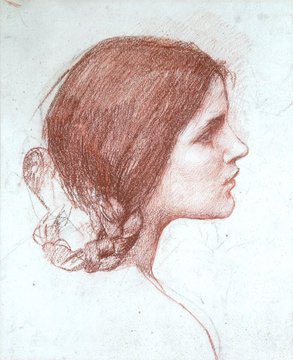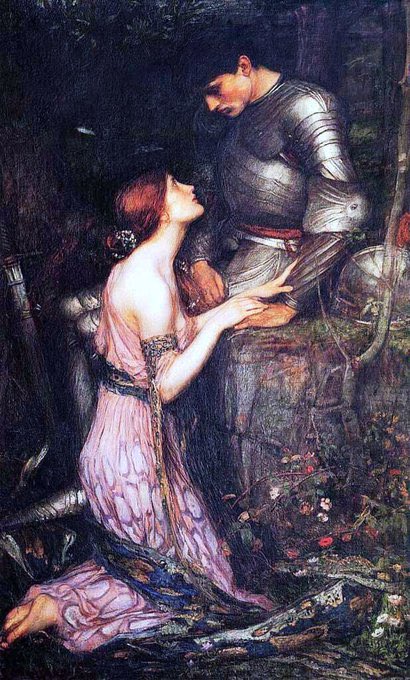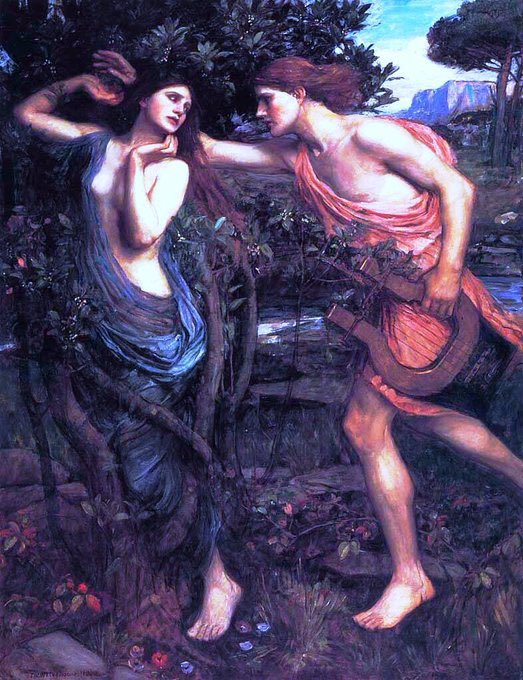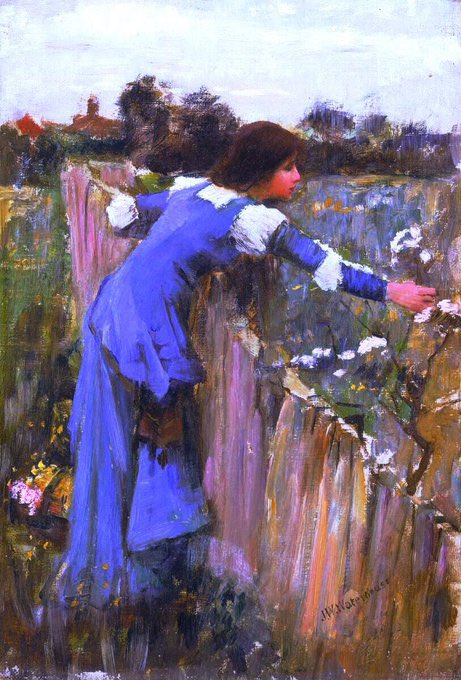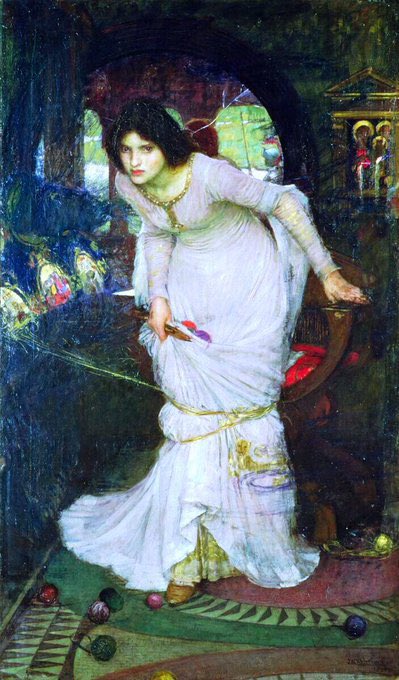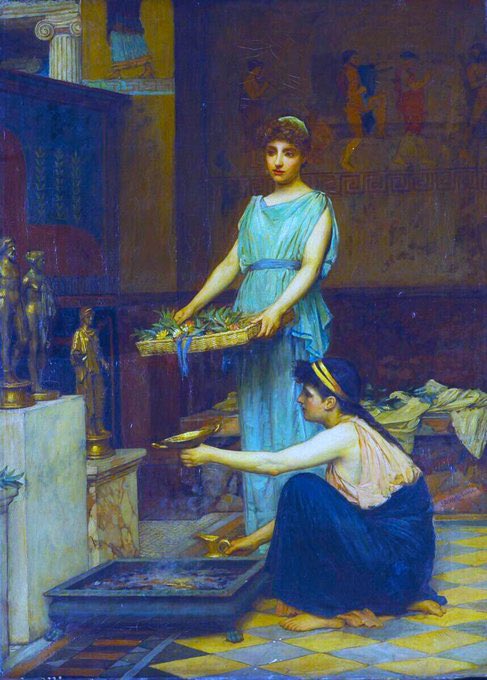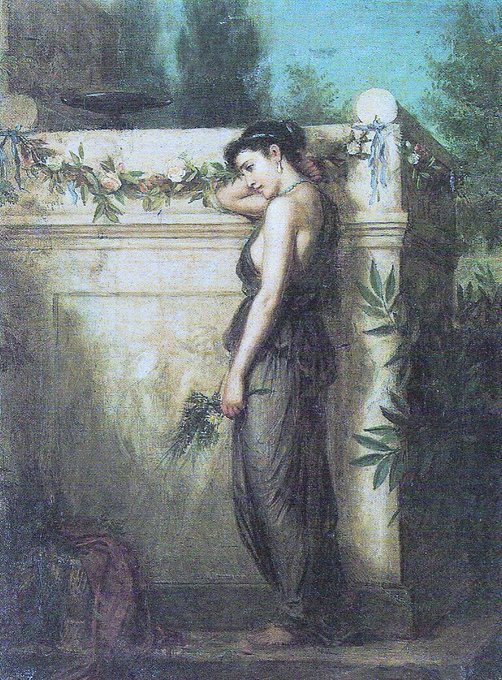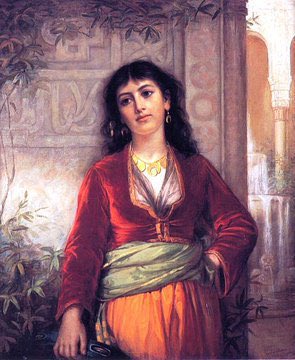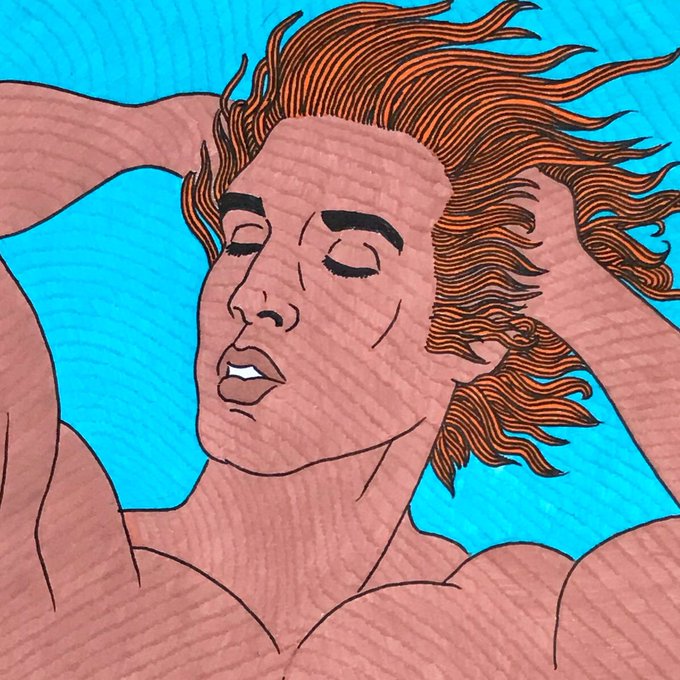It’s interesting that his relatively rare male figures are more sensual than his female ones. Was this the reason his figures are so loathe to express authentic emotion? Head of a Girl (c1905), Lamia (1905)& Apollo & Daphne (1908)
Waterhouse was a gifted draughtsman as can be seen from the marvellous drawings that survive. Study for the Lady Clare (1900), The Flower Picker (1900), the Siren (c1900) & Windflowers (1902)
He later taught at St John’s Wood Art School. Mariana in the South (1897), Ariadne (1898), Awakening of Adonis (1899) & Destiny (1900). Unlike Simeon Solomon he did not explore his sexuality thru paint & his images seek beauty rather than truth.
We should probably think of Waterhouse’s art as mood music. Its point is it’s beauty - no more, no less. And it is ravishing. Ophelia (1894), The Lady of Shalott (1894) & Phyllis Waterlow (1895)
Donce Far Niente (1879), Flower Stall (1880), The Household Gods (1880) & Diogenes (1882). The influence of Alma-Tadema, Leighton & Moore is seen in these works
Initially he painted in the Neoclassical style. He exhibited at the RA from 1874-1916. His aesthetically pleasing work & romantic approach met with great success. After the Dance (1876), Sick Child (1877) & Remorse of Nero (1878)
Born in Rome to English painter parents he enrolled in the RA (1871)& exhibited at their annual shows. His interest was in Arthurian & Classical mythology. Undine (1872), Gone but Not Forgotten (1873) & The Unwelcome Companion (1873)
Thread: John William Waterhouse (1849-1917) was a late English follower of the Pre-Raphaelite movement. His romantic vision remains popular today & is amongst the finest Late Victorian art. Lady of Shalott (1888) is perhaps his most famous work.


